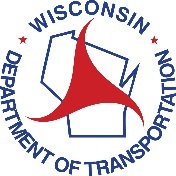November 14th-18th is Crash Responder Safety Week
Saturday, November 12th, 2022 -- 11:00 AM

Wisconsin's emergency responders work tirelessly to save lives and keep our highways safe, responding to approximately 134,700 traffic crashes in Wisconsin every year.
Governor Tony Evers proclaimed November 14-18 as Crash Responder Safety Week and the Wisconsin Department of Transportation reminds motorists to always practice safe driving habits and protect emergency roadside workers. A crash occurs about every four minutes in Wisconsin.
First responders often work just feet away from traffic and put their lives in danger every time they respond to a crash. Since 2017, more than 350 first responders have been injured while working inside their emergency vehicle or at the scene of a crash. Wisconsin’s Move Over Law has been in effect since 2001.
The law requires drivers to shift lanes or slow down in order to provide a "safety zone" for a squad car, ambulance, fire truck, tow truck, utility vehicle, or highway maintenance vehicle that is stopped on the side of a road with its warning lights flashing.
In December 2021, Governor Evers signed Act 115 into law, expanding protections by banning cell phone use in an emergency response area and creating new penalties for drivers who injure or kill a worker on the side of the road.
The law defines an emergency or roadside response area as the section of road within 500 feet of an authorized emergency vehicle with a visible signal, or a tow truck with flashing red lights.
Emergency responder safety is also Wisconsin State Patrol's November Law of the Month which educates drivers on the importance of protecting first responders on the roads. Wisconsin is a national leader in Traffic Incident Management (TIM) training.
The training brings together first responders (i.e., law enforcement, fire, EMS, public works, and towing services) for consistent training on crash scene management. The training focuses on safety and effectiveness in managing roadside incidents, while standardizing operations and communication across agencies.
There are nearly 40,000 responders statewide and almost 50% have received the TIM training. Help protect our roadside heroes:
- Move over or slow down when passing by an incident scene to provide a protective buffer for responders and the motorists behind you;
- If you can “Steer It, Clear It”. Many drivers think they should not move their car if they are involved in a fender bender or crash. If (and only if) your car is drivable and there are no injuries, you should move your car to the shoulder or nearby safe place off of the road before calling 911;
- Plan ahead. Know before you go with 511wi.gov for updates on road conditions and incidents.
Feel free to contact us with questions and/or comments.




